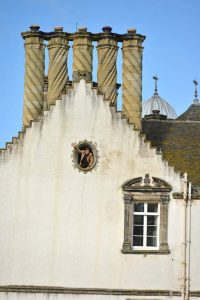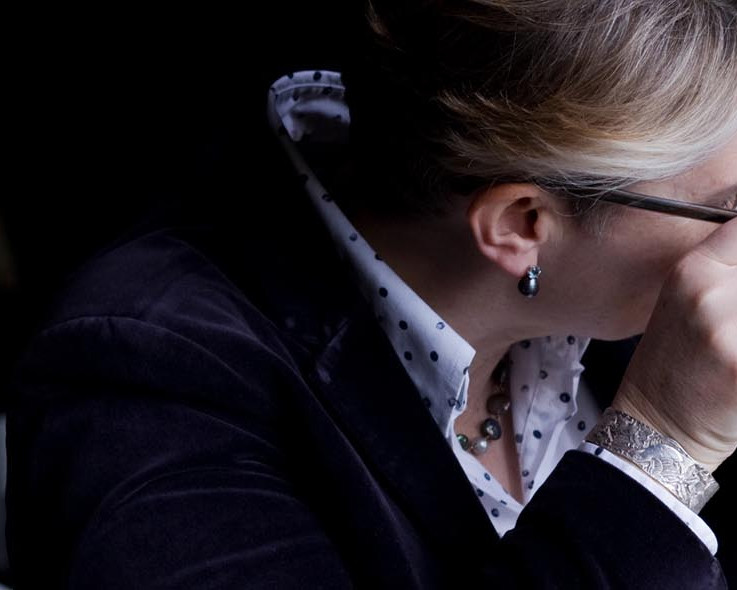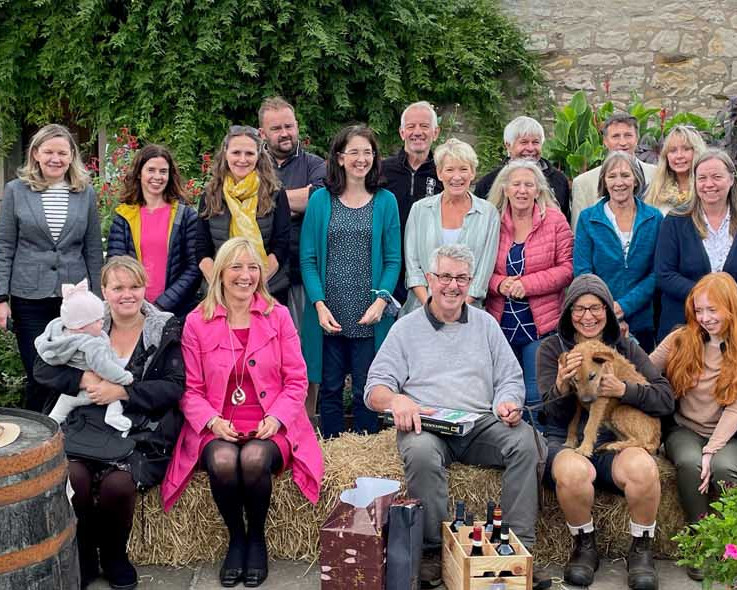
Winton House is grateful to the Scottish Field, Richard Bath, their photographer Angus Blackburn, and writer Nichola Hunter, who published this feature in June 2013. You can read the article below or see the published article Scottish Field feature on Francis & Dorothy June 2013 at Winton House here.
Winton House in East Lothian has a rich and varied heritage – but its present owner is also keen to bring the property into the modern world.
At Winton House by Pencaitland all is not what it seems. At first glance the property is a beautiful example of a house of Anglo-Scots Renaissance, but behind the scenes this is a house with a split personality and a very clear public and personal persona.
This is due in no small part to the current trustee Sir Francis Ogilvy, who took over the reins at Winton in 1992 when his father, Sir David Ogilvy died. He lives in the house with his wife Dorothy, a music teacher at George Watson’s College and their four children, whose ages range from seven to 13.
‘When I took the house and estate over from my parents we had to find our feet a bit,’ Francis recalls. ‘My parents converted part of the house into self-contained flats, which were let, but although the principal rooms were open to the public the programme of renovation which they had started really needed to continue.’

Winton’s heritage is impressive, as Francis explains: ‘It was built by the Seton family and then rebuilt by the Setons!’ The land was granted to the Setons by David I to Phillip de Sayton in 1150, although the first record of any stone building on the site is not until 1480. Phillip’s grandson married the sister of King Robert ‘The Bruce’ of Scotland. In the 16th century, Henry VIII had Winton burnt down in an effort to impress Mary, Queen of Scots and Mary Seton was later her Lady-in-Waiting. The Setons rebuilt and their tenure lasted until 1715 when they backed the Jacobites and the Earl of Winton was taken to the Tower of London. In the absence of the Earl but in his name, Winton was requisitioned by Bonnie Prince Charlie in 1745 when his rebel army camped on Winton Estate.
The Hamilton Nisbets, who later bought the house and estate, linked it to one of the greatest inheritances of the 18th and 19th centuries. Furnishings came from Europe and the Turkish Empire and the impressive estates covered some of the country’s best farmland. Golf was played on estate land which, at that time, included Muirfield and Gullane links.
In 1883 Winton passed to Lady Mary Georgina Constance Hamilton – a clever heiress in high demand. She chose her husband with care and at forty-five married Henry Ogilvy and thus began the third principal family’s involvement in Winton, which lasts to this day.
The role for Francis at Winton is very different to what has gone before but as a rural chartered surveyor, one of his aims is for Winton to complement its natural landscape rather than dominate it. ‘I would like Winton to stand up for the countryside, not be a second cousin to it. There are ways to run big houses like this and still be kind to the environment.’
However, Rome wasn’t built in a day and Francis is very much aware that bringing in sustainable solutions to a 500-year-old property is a gradual process but it is one he’s set in motion having just installed his second biomass boiler, which is fed by timber from the estate. ‘I don’t like to preach about sustainable solutions but at Winton we have timber and this makes financial sense.’
What also made financial sense was to develop the public persona of Winton offering the principal rooms for functions and corporate events and renovating the bedrooms so that the house could be used for weddings but with one proviso: Francis and his family also wanted to continue to live here.

‘What we’ve done is create very clear divisions between public and private areas. We merged the flats my parents created and use that as our living space but it is just a staircase away from the main reception rooms. My children all play instruments so when we host a function we do have to be a bit quieter, although there’s always been a history of concerts here, so it’s a noisy place. When Winton passed to my grandfather in 1920 it was the first time children came here. I think it was a shock to the house but a house likes this needs children – it needs a bit of life about it.’
On a day to day basis, Francis and his family don’t use the public areas as he explains: ‘Winton was built as a house for entertaining and to impress – it wasn’t built as a nice cosy home. When I took over I was continually trying to work out what we could do with it. We knew we wanted it to be used commercially but we also wanted to live here. Visitors do comment that there is a family atmosphere, which is nice because we’re certainly not imposing on them. I don’t find it hard putting on the kilt for guests as I enjoy meeting people and sharing the house with them. And I do get a buzz seeing the house used and appreciated.’
Francis also readily admits that his four children are not yet old enough to appreciate the antique furniture, the formality of the big dining room or the elaborate plaster ceiling in the drawing room, which is devoted to the heraldry of the family. ‘I feel our benchmark for everything we do here is the royal craftsmen. In the library, we’re sitting under ceilings decorated for Charles I.
Plaster moulds were brought from the Royal Palace in Edinburgh Castle and the panels were filled with symbols of the Union of the Crowns, which were intended to entice royal patronage. Apparently we have the most plastered ceilings in Scotland in this property but again it was all done to impress. I don’t think my seven-year-old would really understand that yet, which is why keeping these spaces separate makes sense.’

Ultimately, Francis would like one of his children to take over his role on the estate but, he adds, ‘I’d like to do what my parents did and bend over backwards not to make it so that they have to do it.
The house is only one part of the estate and the main aim is that it’s not a drain. For me Winton isn’t just about the Ogilvy family, it’s valued for what it can give to the community here as well.’

